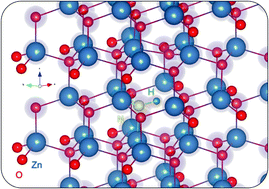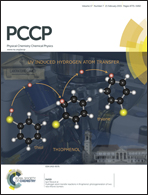The role of the VZn–NO–H complex in the p-type conductivity in ZnO
Abstract
Past research efforts aiming at obtaining stable p-type ZnO have been based on complexes involving nitrogen doping. A recent experiment by (J. G. Reynolds et al., Appl. Phys. Lett., 2013, 102, 152114) demonstrated a significant (∼1018 cm−3) p-type behavior in N-doped ZnO films after appropriate annealing. The p-type conductivity was attributed to a VZn–NO–H shallow acceptor complex, formed by a Zn vacancy (VZn), N substituting O (NO), and H interstitial (Hi). We present here a first-principles hybrid functional study of this complex compared to the one without hydrogen. Our results confirm that the VZn–NO–H complex acts as an acceptor in ZnO. We find that H plays an important role, because it lowers the formation energy of the complex with respect to VZn–NO, a complex known to exhibit (unstable) p-type behavior. However, this additional H atom also occupies the hole level at the origin of the shallow behavior of VZn–NO, leaving only two states empty higher in the band gap and making the VZn–NO–H complex a deep acceptor. Therefore, we conclude that the cause of the observed p-type conductivity in experiment is not the presence of the VZn–NO–H complex, but probably the formation of the VZn–NO complex during the annealing process.


 Please wait while we load your content...
Please wait while we load your content...